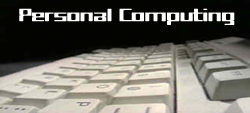 By Reid Goldsborough
By Reid Goldsborough
From close to their inception, computers have not only been calculating machines but also connecting tools to link us with one another. The way computers and other digital devices connect us is by connecting to one another.
The various ways computers connect have evolved over the years. Today the most important, and interesting, connections include Wi-Fi, LTE, fiber, coax, HDMI, USB, and Bluetooth. Making the best use of these connections will help you get the most out of whatever computer equipment you’re using, from smartphone to desktop PC.
Wi-Fi. This is one of the most successful digital technologies of the past decade, a convenient way to connect PCs, smartphones, tablet computers, and game consoles to the Internet over the air using radio waves.
You need to be careful, however, to ensure that snoops don’t capture your information at free public Wi-Fi hotspots in places such as coffee shops and airports.
The best protection against this is a virtual private network (VPN), which turns public connections into private ones using encryption. You can sign up for a VPN service such as Hotspot Shield (www.anchorfree.com) or Private WiFi (www.privatewifi.com), with pay versions of these services more robust than the freebies.
Ethernet is the tangible cousin to Wi-Fi, a physical cable that can connect a desktop or laptop PC to a modem or router. Though often less convenient, Ethernet connections are typically faster than Wi-Fi connections.
LTE. Also called 4G LTE, LTE is the most advanced commonly available way for smartphones and other portable computing devices to connect to one another and the Internet. Short for the marketing term “long-term evolution,” LTE isn’t yet available nationally let alone globally, but it’s evolving into what could be a global network.
Devices that can connect over a LTE cell network can automatically drop down to slower 3G speeds if this is all that’s available. Different service providers are more aggressive, and spend more money, than others in rolling out LTE, with Verizon and AT&T leading the pack.
When Wi-Fi is available, it’s a better and less expensive option. Being too voracious in streaming movies to your Samsung Galaxy or iPad over LTE can wind up costing you thousands of dollars a year, and it’s one of the reasons for the hefty profit margins currently enjoyed by cellular providers.
Fiber. Optical fiber is the fastest popular broadband technology for connecting computers to the Internet as well as for providing television and telephone service. It’s commonly used by traditional telephone providers such as Verizon.
The main competing technology is coax, also called coaxial cable. It was the first widely used broadband technology, and it’s still the primary type of cable used by traditional cable providers such as Comcast.
Real-world performance for coax and fiber is comparable. The main difference distinguishing major players has been customer service, with Comcast repeatedly scoring poorly in surveys over the years, which according to pundits led the company to deemphasize the “Comcast” brand name and introduce the “Xfinity” brand name.
In areas where fiber and coax are not available, another choice is a satellite connection. It’s not as fast, and it needs a clear line of sight to the region in the sky where the particular geosynchronous satellite used is positioned. The top satellite provider is DirecTV, with competition from Dish Network.
HDMI. Short for High-Definition Multimedia Interface, HDMI cables are the best way to transmit audio-video to a high-definition TV or a PC.
The word for the wise here, frequently repeatedly but often ignored, is to avoid the lure of pricey brand-name HDMI cables.
Testing by consumer and computer magazines has repeatedly shown that $5 HDMI cables are as capable and reliable as $40 cables. Introduced a decade ago, HDMI cables have become commodities, with little differentiating them.
USB. Another remarkably popular, and remarkable, connecting technology is USB, or Universal Serial Bus, which connects PCs and other digital devices to other devices ranging from printers and mice to smartphones and GPSs.
USB flash drives, also called thumb drives because of their small size, have replaced floppy drives and other portable storage technologies and are often used as a “sneakernet” when walking data from one location to another. As with most, though not all, digital technologies, prices have significantly dropped over the years as capacity has significantly increased.
Bluetooth. Another technology for connecting peripherals to desktop and laptop PCs and other portable devices, Bluetooth is the wireless equivalent of USB. Devices using Bluetooth range from keyboards and mice to headsets and mobile phones.
♦

